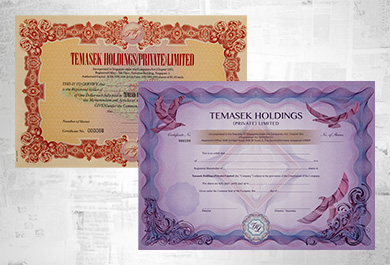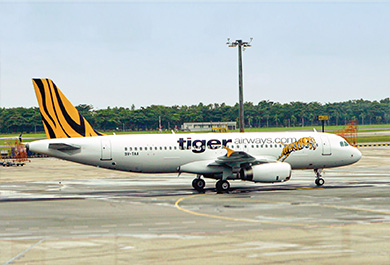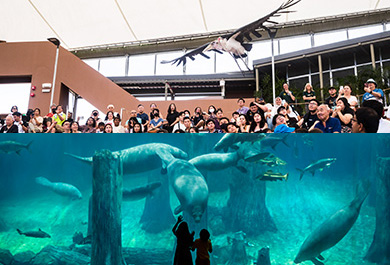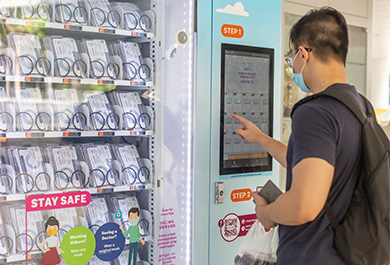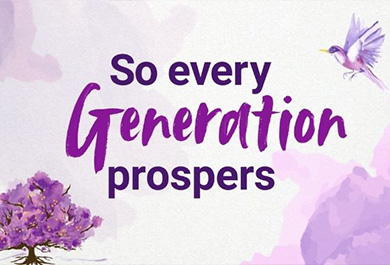Commemorating 50 years of Resilience, Growth, and Purpose
Drawing from extensive research and interviews with about 90 Temasek staff, alumni, and business partners, By Generations, For Generations takes you behind the scenes of key business deals, offering a rare insider glimpse into the firm’s unique 50-year history.
Beginnings: Birth of Temasek (1974)
In 1973, the year before Temasek was founded, Singapore as a nation was barely eight years old. The country had clearly picked itself up since independence, first from British colonial rule and later, Malaysia.
However, the Singapore Government was also hampered by a growing stable of companies it had to manage.
A sleepy start: First Temasek office and staff (1977)
When Margina Lee, one of the first employees at Temasek, joined the company in 1977, her office was in an attic room in what was then Fullerton Building, located next to the Singapore River. It was on the sixth floor, in a windowless room big enough for only four people.
Tiger Airways: Moving the masses (2003)
Considering that a rising Asian middle-income population would be looking to travel more and at affordable prices in the early-2000s, Temasek took the opportunity to invest in a low-cost carrier, Tiger Airways.
Margaret Lui, former Senior Managing Director in Temasek, was part of the team which handled the investment and sat on the Tiger board.
Mumbai and Beijing: Breaking new ground (2004)
As Temasek started to look for longer-term investment opportunities, it decided to tap into the emerging Asian economies, including India and China.
Many of these emerging Asian economies were at a similar stage of growth to Singapore’s a few decades earlier. All would offer fresh opportunities for Temasek.
Temasek’s bond issues: Adding new sophisticated stakeholders (2005)
As Temasek grew in size, both in terms of its portfolio and network of partners and stakeholders, it decided to put in place three “public markers” which would always keep Temasek transparent and accountable for its actions. One was to state its portfolio performance in its annual publication, Temasek Review; the second was to obtain credit ratings; and the third was to issue bonds.
Temasek Trust and Temasek Foundation: Institutionalising philanthropy (2007)
While Temasek had already been contributing to the community on an informal basis, both monetarily and through staff volunteer efforts, it decided in 2003 to institute a policy of setting aside a portion of its net-positive returns above its risk-adjusted cost of capital for community gifts.
Developing Mandai: A vision for an eco-future (2014)
To Temasek CEO Dilhan Pillay Sandrasegara, Mandai Wildlife Reserve (MWR) is the one project that fulfils all three roles mapped out in the 2012 Temasek Charter – an investor and shareholder, a forward-looking institution, and a trusted steward.
Sustainability at the Core: Beyond profits (2016)
With the launch of Ecosperity in 2014, Ho Ching, Temasek’s former Executive Director and CEO, already knew that environmental and sustainability issues would have a growing impact, not only on Temasek’s business and how it operates, but on the investment world at large.
Hence, she set the wheels in motion for Temasek’s next big evolution – embedding sustainability within the company.
The COVID-19 pandemic: “How much is a life worth?” (2020)
The pandemic began in Wuhan, China, in December 2019. A month later, on 23 January 2020, Singapore confirmed its first case of the virus, from a man who had arrived from Wuhan. It was clear that this was no ordinary virus, and it had no respect for borders.
The Purpose Conversation: Why we do the things we do (2021)
Landing on the definition of Temasek’s purpose was a crucial component of its T2030 strategy. This was why the organisation took a year to engage its staff in what it called the Purpose Conversation.
Get a rare insider glimpse into Temasek's 50-year history
By Generations, For Generations charts Temasek’s evolution from its humble beginnings in 1974 as a custodian of state assets to a global investor.
Go behind the scenes of Temasek’s key business deals and find out more about the firm’s unique 50-year history.




